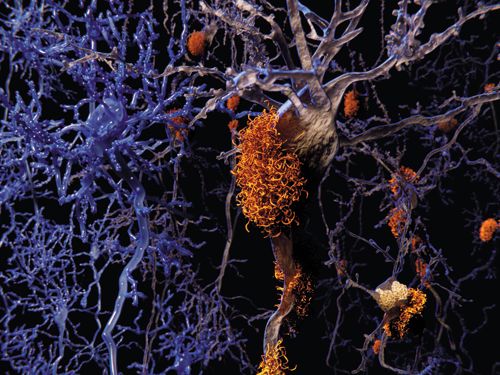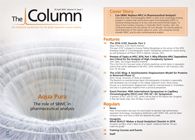Investigating Alzheimer’s Using UHPLC–MS
Researchers from Heilongjiang University of Chinese Medicine, China, have used ultrahigh-performance liquid chromatography coupled to mass spectrometry and metabolomics to investigate the metabolic networks of Alzheimer’s disease, identifying potential biomarkers and biochemical mechanisms.
Photo Credit: JUAN GAERTNER/SCIENCE PHOTO LIBRARY/Getty Images

Researchers from Heilongjiang University of Chinese Medicine, China, have used ultrahigh-performance liquid chromatography coupled to mass spectrometry (UHPLC–MS) and metabolomics to investigate the metabolic networks of Alzheimer’s disease (AD), identifying potential biomarkers and biochemical mechanisms.1 The study also investigated the effect of the traditional Chinese medicine Kai-Xin-San (KXS) on those metabolic pathways.
Alzheimer’s disease is an incurable, degenerative, and eventually terminal disease affecting the brain. This multifactorial disease affects one in nine people over the age of 65,2 and is the most prevalent cause of dementia in the elderly. As a result of worldwide rising life expectancies, AD is an increasingly important global issue. In America alone an estimated 5.3 million people suffered from the disease in 2015 with those numbers expected to increase.2
Classified as a progressive neurodegenerative disorder, AD gradually deprives sufferers of cognitive function, affecting behaviour, language, and visualization skills, and eventually causing death.3 Currently the specifics of what causes AD are not known, and many hypotheses are under investigation. However, oxidative stress is increasingly verified as a primary cause;4 more general initiating events such as genetics, environmental, lifestyle factors, and heredity are considered important risk factors.
There is no effective treatment strategy for AD, despite many strategies existing. Traditional Chinese medical texts recommend KXS - a mix of Ginseng radix, Polygalae Radix, Poria, and Acori Tatarinowii Rhizoma - and previous studies have shown KXS to improve learning and memory deficit in neurological-scarred rats,4 reverse the learning impairment induced by scopolamine,5 and modulate the central monoaminergic neurotransmitter system.6
Researchers used a UHPLC quadrupole time-of-flight (QTOF) MS–MS-based metabolomics approach to characterize AD, and induced AD using D-gal and AlCl3 in model rats to investigate the protective effects of KXS. Rats were subjected to a Morris water maze (MWM) test to assess spatial learning and memory ability following prolonged administration of KXS in varying doses. Following behavioural evaluation, rats were sacrificed and samples processed using western blot analysis and UHPLC–MS.
Based on the results from the behavioural test the study concluded that KXS might have improved the learning and memory abilities of rats at risk of AD. Analytical analysis identified 48 potential biomarkers and predicted the major metabolites network of AD. In addition, 36 altered metabolites were found to have been restored back to control-like levels, and 30 possible biochemical indicators were regulated significantly following KXS treatments. Further refinement and validation of these biomarkers was recommended by the authors as well as investigation into the pharmaceutically interesting components of KXS to improve therapeutic regiments. - L.B.
References
- H. Chu et al., J. Chromatogr. B1015, 50–61 (2016).
- Alzheimer’s Association. Alzheimer’s disease facts and figures. (2015).
- D.J. Selkoe, Physiol. Rev.81, 741–766 (2001).
- N. Nishiyama, Y. Zhou, and H. Saito, Biol. Pharm. Bull.17, 1679–1681 (1994).
- W. Wang et al., J. Ethnopharmacol.131, 313–320 (2010).
- X.J. Zhou et al., J. Ethnopharmacol. 139, 422–428 (2012).

Polysorbate Quantification and Degradation Analysis via LC and Charged Aerosol Detection
April 9th 2025Scientists from ThermoFisher Scientific published a review article in the Journal of Chromatography A that provided an overview of HPLC analysis using charged aerosol detection can help with polysorbate quantification.
Analyzing Vitamin K1 Levels in Vegetables Eaten by Warfarin Patients Using HPLC UV–vis
April 9th 2025Research conducted by the Universitas Padjadjaran (Sumedang, Indonesia) focused on the measurement of vitamin K1 in various vegetables (specifically lettuce, cabbage, napa cabbage, and spinach) that were ingested by patients using warfarin. High performance liquid chromatography (HPLC) equipped with an ultraviolet detector set at 245 nm was used as the analytical technique.














